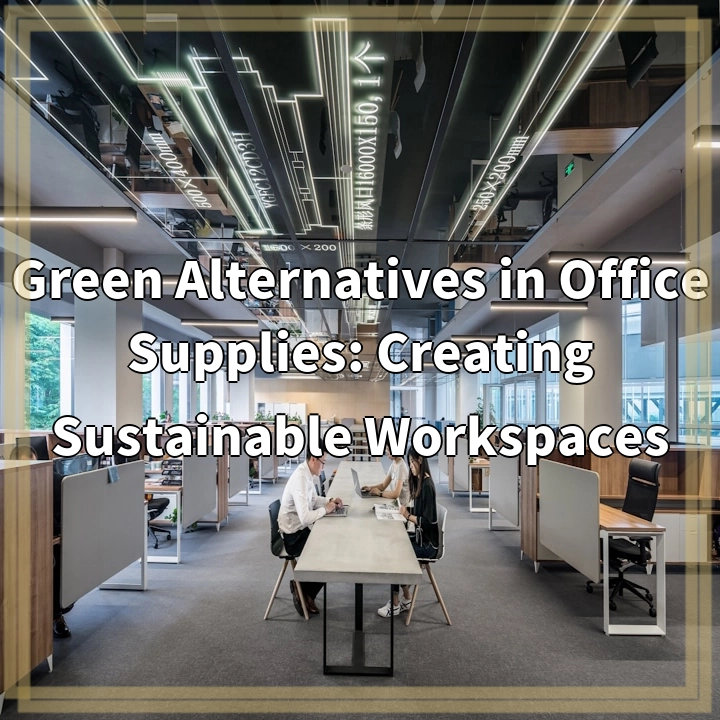
What it is
Green alternatives in office supplies refer to eco-friendly and sustainable options for commonly used office materials and equipment. With growing awareness about environmental issues, businesses and individuals are increasingly seeking ways to reduce their ecological footprint and create more sustainable workspaces. This includes selecting products that are made from recycled or renewable materials, have low carbon emissions throughout their lifecycle, and are recyclable or biodegradable.
Real-World Problems
Despite growing efforts to promote sustainability in the workplace, there are several challenges and obstacles associated with incorporating green alternatives in office supplies:
1. Limited Availability and Options
One of the main challenges is the limited availability and variety of eco-friendly office supplies. While there has been a notable increase in environmentally friendly alternatives, it can still be difficult to find specific items or brands that meet sustainability criteria. This can be a barrier for businesses looking to fully transition to green alternatives.
2. Higher Cost
Green office supplies often come with a higher price tag compared to traditional, non-sustainable options. This cost differential can be a deterrent for businesses, especially small and medium-sized enterprises with limited budgets. The perception of higher costs may also prevent individuals from adopting greener options for their personal workspaces.
3. Performance and Durability
Some green alternatives in office supplies may not perform as effectively or be as durable as their conventional counterparts. This can undermine their adoption, as businesses and individuals prioritize functionality and longevity. It is essential for sustainable office supplies to meet high-quality standards to overcome this hurdle.
4. Lack of Awareness and Education
A lack of awareness and education about the benefits and availability of green alternatives is another challenge. Many businesses and individuals may not be familiar with sustainable office supplies or may not understand their importance in reducing environmental impact. Education and awareness campaigns can help address this issue.

Solutions for Green Alternatives in Office Supplies: Creating Sustainable Workspaces
Addressing the challenges associated with green alternatives in office supplies requires a multi-faceted approach. Here are some solutions to promote and embrace sustainability in the workplace:
1. Increasing Availability and Options
Efforts should be made to increase the availability and variety of eco-friendly office supplies. This can be achieved through partnerships with suppliers who prioritize sustainability and by encouraging the development of new products that meet environmental criteria. Businesses can also actively seek out and support sustainable brands in order to create a demand for such products.
2. Cost-Effective Alternatives
Finding cost-effective green alternatives is key to overcoming the budgetary challenge. Businesses can search for suppliers that offer competitive pricing on sustainable options, take advantage of bulk purchasing to negotiate better deals, or consider leasing equipment instead of buying to reduce upfront costs. Educating individuals about the long-term cost savings associated with sustainable options can also help justify the initial investment.
3. Performance and Durability Standards
Encouraging manufacturers to improve the performance and durability of green office supplies is instrumental in gaining wider acceptance. Setting industry standards and certifications for sustainability and performance can help businesses and individuals confidently choose eco-friendly options without compromising on quality.
4. Raising Awareness and Providing Education
Increasing awareness and education about the benefits, availability, and importance of green alternatives in office supplies is crucial. This can be done through workshops, seminars, and online resources that provide information on sustainable options, case studies, and success stories. Collaboration with sustainability experts and organizations can also help disseminate knowledge and encourage adoption.















